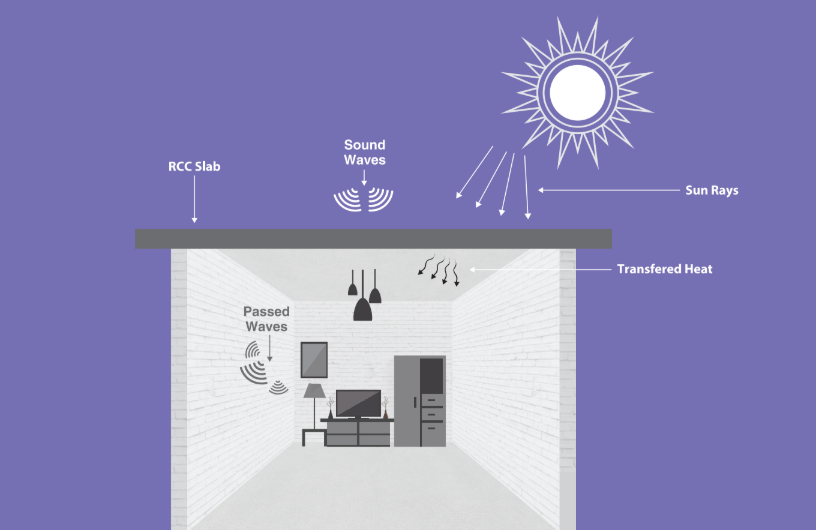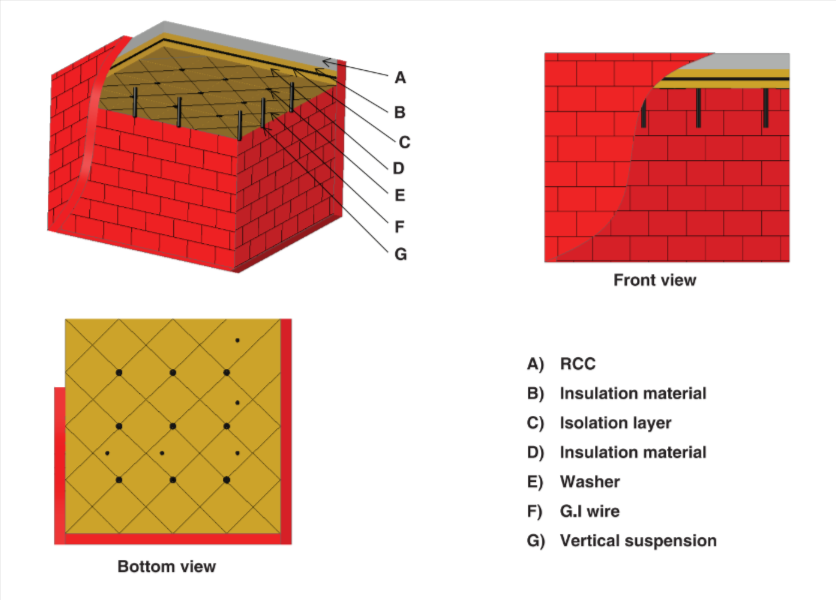Let’s Start Work
Together
Please feel free to contact us. We will get back to you with 1-2 business days. Or just call us now.
Brochure
Download our document to see specific data of the service and how we work.
RCC ROOFS ARE GOOD CONDUCTORS OF HEAT
Since roofs are more exposed to sun, they tend to draw more heat from the atmosphere as compared to other structures. Roofs are usually made of RCC, whose thermal resist-ance is quite low at 1.58 W/mK. That makes RCC roofs good conductors of heat. So the heat transfer is higher through roofs.
TWO TYPES OF SOUNDS IN BUILDINGS
Two types of sounds are generated in a building: impact sound and airborne sound. Impact sound is generated by physical impact between objects, for instance, gym or dance, which transfers to the space below the floor. Airborne sound, which travels through air, is generated by TV, people talking, music system, etc.
RCC CANNOT BLOCK SOUND
Both heat and sound can get transferred to the floor below through RCC slabs, as it is a good conductor of both. This heat and sound transfer can disturb the occupants in the floor below, especially those areas that come under kitchen or if some pipeline or duct work is happening outside. This requires more energy to maintain comfortable temperature. Impact sound is very difficult to eliminate entirely or reduce as compared to the airborne sound.
- RCC is good conductor of heat and sound
- Both airborne and impact sound cannot be stopped by RCC
- Roofs need proper insulation for occupants' comfort
INSULATION ON ROOF HELPS
To reduce the effect of both heat and sound transfer, the roof should be insulated. The type and thickness of the insulation material depends on the R-value requirement which varies from application to application. Also, for acoustic insulation, NRC and STC value of the insulation material is important. NRC value represents the ability of the material to absorb the sound. STC value shows how much sound is isolated by the material. In discos, higher STC value material can be used because sound can be isolated inside the room. This does not disturb the people outside the disco. In theater halls, material with high NRC value is preferable because if the sound is not absorbed then it causes reverberation and echo.
InDeck System is the Answer
INDECK system is specially designed for such scenarios. The combination of the materials is designed in such a way that it protects the space from both thermal and acoustic ingress. These systems are installed with the help of mechanical fasteners from under the roof. This system can be covered with false ceiling. This can enhance the aesthetics of the space. The suggested thickness for this system may vary from 50 mm to 100 mm
Ideal For
Private Residences, Hospitals, Educational Institutions, etc.
- InDeck Systems help insulate thermal and sound ingress
- The solution is highly customizable depending on the requirements



